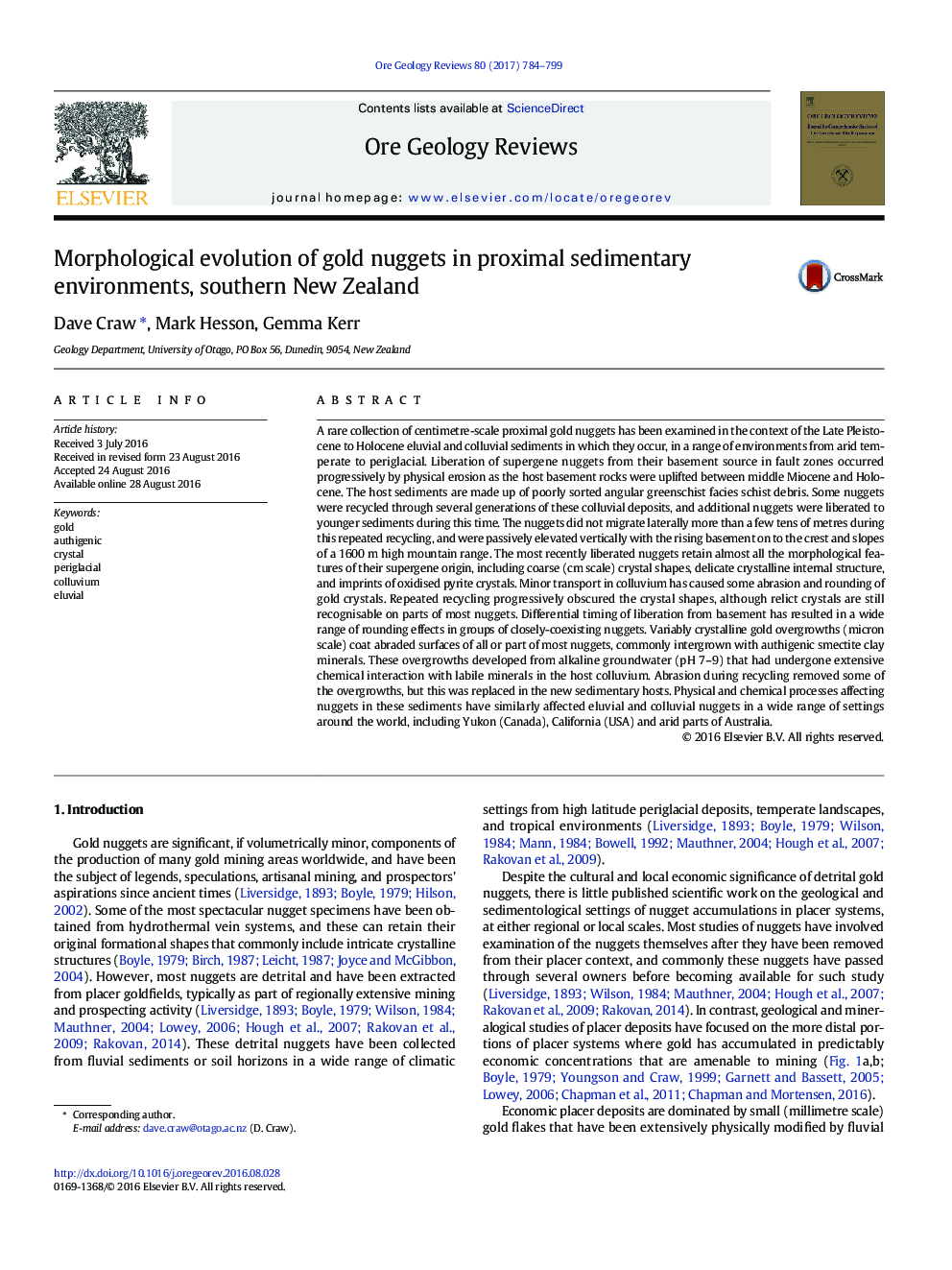| Article ID | Journal | Published Year | Pages | File Type |
|---|---|---|---|---|
| 6435656 | Ore Geology Reviews | 2017 | 16 Pages |
â¢Centimetre scale crystalline supergene gold nuggets are progressively liberated from basement sourcesâ¢Nuggets have moved laterally only metres to tens of metres in colluvium and landslidesâ¢Surface abrasion of nuggets causes some rounding, and rounded nuggets are joined in colluvium by angular nuggets liberated during later erosionâ¢Micron scale Ag-bearing authigenic gold overgrowths develop on angular and rounded nugget surfacesâ¢Chemical gold mobility occurs in association with authigenic clay alteration of labile minerals in colluvium at pH 7-9
A rare collection of centimetre-scale proximal gold nuggets has been examined in the context of the Late Pleistocene to Holocene eluvial and colluvial sediments in which they occur, in a range of environments from arid temperate to periglacial. Liberation of supergene nuggets from their basement source in fault zones occurred progressively by physical erosion as the host basement rocks were uplifted between middle Miocene and Holocene. The host sediments are made up of poorly sorted angular greenschist facies schist debris. Some nuggets were recycled through several generations of these colluvial deposits, and additional nuggets were liberated to younger sediments during this time. The nuggets did not migrate laterally more than a few tens of metres during this repeated recycling, and were passively elevated vertically with the rising basement on to the crest and slopes of a 1600Â m high mountain range. The most recently liberated nuggets retain almost all the morphological features of their supergene origin, including coarse (cm scale) crystal shapes, delicate crystalline internal structure, and imprints of oxidised pyrite crystals. Minor transport in colluvium has caused some abrasion and rounding of gold crystals. Repeated recycling progressively obscured the crystal shapes, although relict crystals are still recognisable on parts of most nuggets. Differential timing of liberation from basement has resulted in a wide range of rounding effects in groups of closely-coexisting nuggets. Variably crystalline gold overgrowths (micron scale) coat abraded surfaces of all or part of most nuggets, commonly intergrown with authigenic smectite clay minerals. These overgrowths developed from alkaline groundwater (pHÂ 7-9) that had undergone extensive chemical interaction with labile minerals in the host colluvium. Abrasion during recycling removed some of the overgrowths, but this was replaced in the new sedimentary hosts. Physical and chemical processes affecting nuggets in these sediments have similarly affected eluvial and colluvial nuggets in a wide range of settings around the world, including Yukon (Canada), California (USA) and arid parts of Australia.
Graphical abstractDownload full-size image
